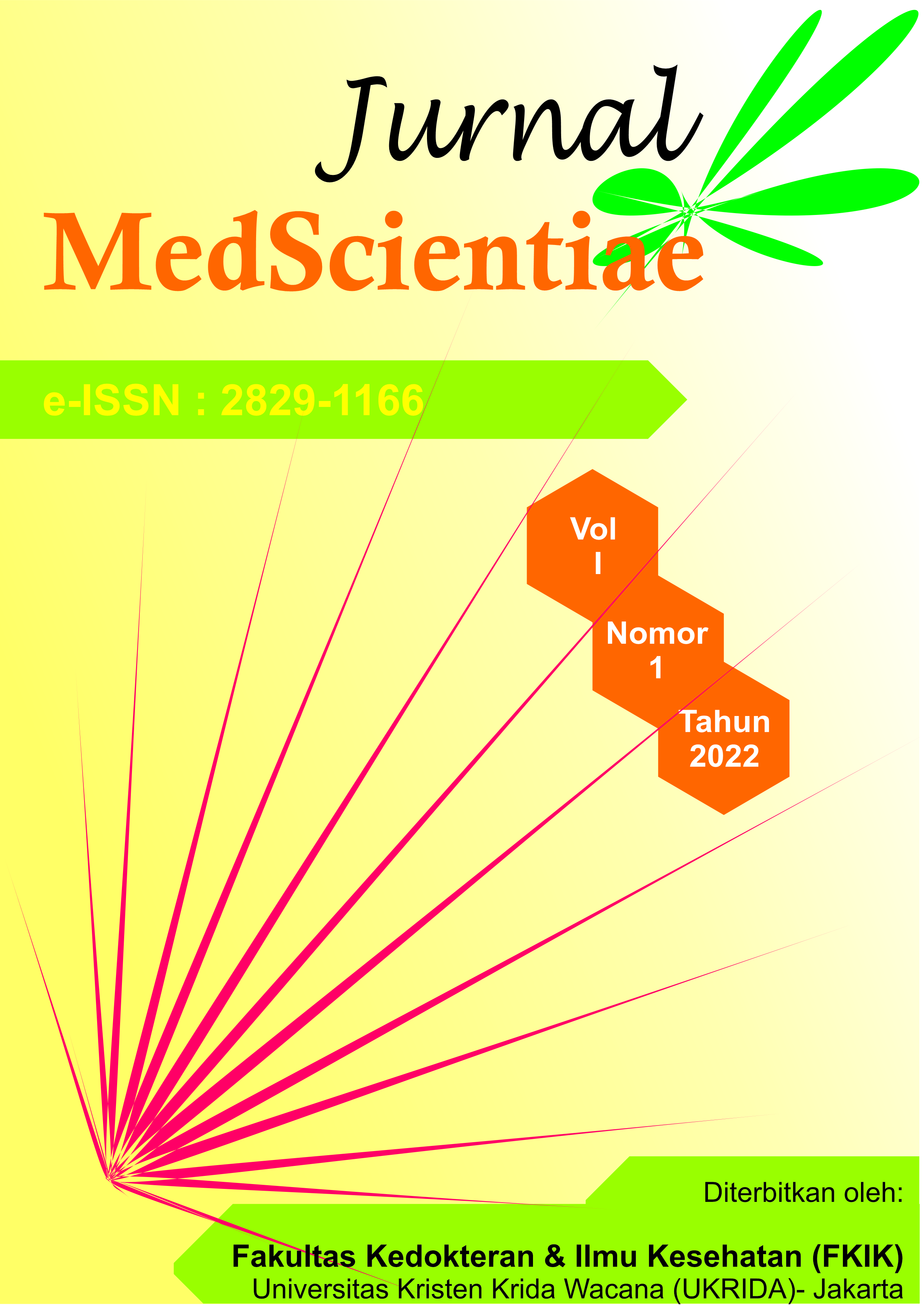An Overview and The Factors Affecting Anaemia in Children Aged 6-24 Months at RSUD Tarakan
DOI:
https://doi.org/10.36452/JMedScientiae.v1i1.3096Keywords:
anemia, haemoglobin, risk factors, severityAbstract
Anaemia is a clinical condition in which the erythrocyte level is below the normal value, causing oxygen insufficiency in body tissues. The purpose of this study was to determine the risk factors and the overview that affects the degree of anaemia in children aged 6 to 24 months in Tarakan Hospital. A cross-sectional design was used by analysing data from medical records retrospectively in the period January 2017-June 2018 and conducted interview sessions with parents or caregivers of patients using sample of 66 patients. The data evaluated included haemoglobin (Hb) levels, nutritional status, gestational age, consumption of type of milk for the first 6 months, and complementary feeding according to age using Kolmogorov Smirnov test. The highest prevalence of anaemia severity in Tarakan Hospital at the stated period was moderate anaemia of 47 people (71.2%). Distribution of severe anaemia incidence was 8 people (12.1%) and mild anaemia was 11 people (16.7%). Based on the test results, the obtained p value of risk factors for gestational age (0.759), nutritional status (0.999), consumption of the type of milk for the first 6 months (1,000) and complementary feeding according to age (1,000) where all p values> 0.05, that indicates no correlation statistically. The results of this study showed no correlation between risk factors and severity of anaemia statistically in children aged 6 months to 24 months in Tarakan Hospital.
Downloads
Published
How to Cite
Issue
Section
License
Copyright (c) 2024 Aulia Fitri, Rudy Ciulianto, Maya Surjadjaja, Danesh Agilan

This work is licensed under a Creative Commons Attribution-NonCommercial-ShareAlike 4.0 International License.








